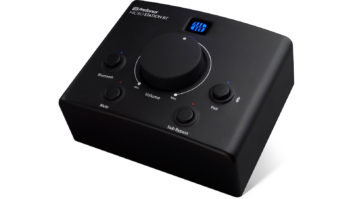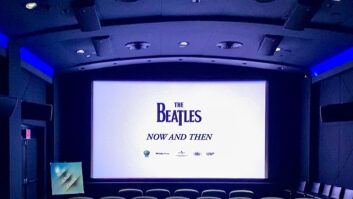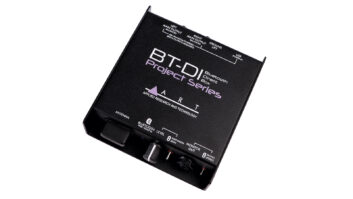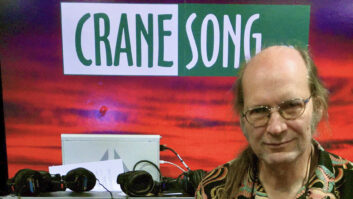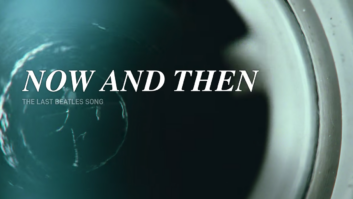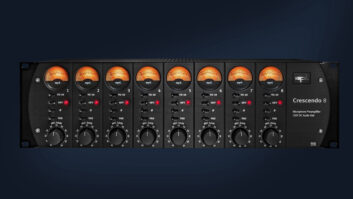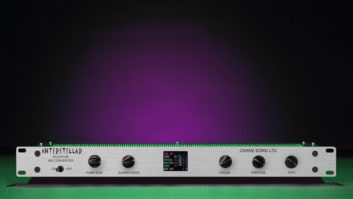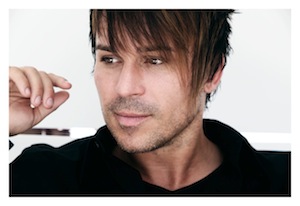
Photo: Myriam Santos
Sampling has altered the course of music in obvious and subtle ways over the past quarter-century or so. Integrating snippets of well-known recordings with new ones set off a series of legal ground fires. Jingle demos evolved into full-blown productions, thanks to emulated ensembles. Composers of “classical” music—some—adjusted their techniques to include the new technologies, working with hybrid scores of real and virtual instruments.
For all its virtues, sampling has a pronounced sonic weakness. Samples can’t “hear” each other, and as a result overtones—even if they are present in individual sounds—don’t combine in the ways that help make the experience of listening to “real” instruments pleasurable.
Consider the above an introduction to our interview subject, BT. Once an infant terrible who turned pop music in a new direction and helped define trance, Brian Transeau finds himself entering the middle phase of his career. Madly adored by the fans who turn out by the tens of thousands to watch him spin at live events, BT is a thoughtful, curious guy. His ability to dig down to the individual sample level and create a rich, dense and thoroughly individual sonic palette places him in rare recording territory.
BT’s ninth album, A Song Across Wires, will be released this month. We spoke to him recently about the new record, technology and art. If you’re interested to hear what this voluble artist has to say on a broader musical level, please check out the blog post at http://blog.mixonline.com/mixblog/2013/07/11/a-conversation-with-bt/.
When you began work on A Song Across Wires, did you have a specific goal in mind?
This album is a return to dance music for me. For many years—I’d say between 2002 and 2007—everything went into this blasé, minimal tech-house area that I found boring. There’d be one stabby sound with no development at all. I can deal with Philip Glass, but using machines in this way—no!
My love of electronic music surged when I heard what was happening in the UK; garage music transformed into two-step and early versions of bass music, ghetto tech—all of this interesting material began to merge into an interesting new style. I’d been cutting and pasting audio for 20 years, but people were applying this technique to new sounds, and it reinvigorated my love for electronic dance music. This cut-and-paste aesthetic applied to new sound modalities and signal processing techniques is incredible. This record is my compositional and production effort applied to electronic dance music as it exists today.
Have the improvements in live venue sound systems changed your performances?
Absolutely. The interesting thing is that until you see this kind of music performed contextually in a massive spot, you haven’t really heard it. You can’t appreciate it by listening over a great set of headphones in your studio. It’s all about being surrounded by other people, experiencing the communal moment of listening to music you love over a perfectly tuned sound system. The composition is what takes place on one single night, from the beginning to the end; that’s the symphony of dance music. To extend the metaphor, the sound system is the violin and the records are the hands of the players and the bows. If the right person is leading the event, a magical experience takes place that will never be repeated.
Take Bassnectar, for example. He brings a mastering engineer with him to his dates, and his own subwoofer. They resample the room and analyze the refractions, all the way down to F1, the 36Hz range. They tailor what they do to the possibilities of the room itself.
If we can shift gears, do you think that digital recording technology has reached its full maturity?
With 96kHz recording and the fact that many DAWs operate in the 32-bit realm, honestly, we’re get getting close to the limit of the refresh rate of our brains. We can perceive more than we’re given credit for, though. It’s generally assumed that we hear in the 20 to 20,000Hz range. I believe that, on a subconscious level at least, we perceive more information than that. If you think about aliasing, which occurs in the 16kHz range, we can’t hear it, but we do perceive it.
The state of recording technology—the plug-ins, the power of DAWs—we’re about as far as we need to go in the area of reproducing sounds that exist in the real world. That said, we’re sorely lacking in terms of reproduction. I know that people say the battle is over, that we have a lost generation who are perfectly content listening to crappy MP3s on earbuds. But I’m hoping there will be a transcendent moment where people hear supersonic speakers, a concentrated sound beam, and they will crave the experience of air molecules moving in a compelling way around their bodies.
You’re in the process of revamping your personal studio. What’s going on?
My studio has been in bits and bobs, spread out over the living room floor for the last 10 months. All of my gear had been in a small, modest room out in the middle of the woods, a kind of compositional man cave. It’s very quiet out there, with loads of animals running around. Along with my analog synthesizers, DAWs, computers and outboard gear, I had an Ikea wraparound desk that was too high for me. I ended up injuring myself at that desk, so I decided to find a carpenter who could help me build a studio from scratch.
I found a retired carpenter and begged him to make me a wood desk. We looked around and found a naturally felled maple tree that had been struck by lightning. It’s 250 years old, hardwood. I bought and cut the tree, and that’s what we’re using for the desk. The edges are live wood, which is the hardest material for a carpenter to work with. The design is beautiful. I have an EAR compressor and a bunch of exotic old tube compressors and EQs. The desk is built to hold them all perfectly.

Did you work with an acoustical designer?
I have an acoustician, Garrett, who has worked on all of my studio installations; the two of us handle the design work. I’m a fan of IK Multimedia’s ARC System—we used that to help us tweak the room.
What DAW do you use?
I have a Pro Tools system, but my main rig is Logic 9 running on a 12-core G5. I also run FL Studio on a PC. Some people underestimate FL Studio, but it’s the most incredible DAW on the planet. You can do things with it that no other DAW even attempts, like route an LFO to the master clock—sit with that for a minute! It has a deep sequencer, and the Harmor additive synthesizer blows my mind.
Is your PC an off-the-shelf computer?
No, I built it myself from scratch. I initially put this computer together to do video editing using Vegas, which is a fantastic program. I create molecular tonal events inside the PC—that’s my sculpting palette. Then I pull these sounds over to my main Mac and work on a composition.
Are you familiar with Composers Desktop Project? They’ve been around for more than 25 years, developing software that works on sonic material. My favorite tools for composing are high-level DSP operations that run offline. One of the songs on my new album, “Must Be The Love,” used some crazy granular DSP operations that I did in CDP on a Mac terminal. Everything has to be done in code; whatever interpolations you want to perform—stretching a single wave cycle, for example—you have to type in all this data and then hit execute! I sometimes work for days on a single sound file, shredding it in every way I can think of. This is a huge part of my compositional style.
You still rely on a rig of analog synths, don’t you?
Yes, I have a lot of synths, but I’m paring down to my favorites, which include a Jupiter-8, Prophet 5, an ARP 2600 and a custom 4-voice Oberheim synthesizer. I also own a pair of Frostwave step sequencers and a Roland TB-303. All of this stuff is over 30 years old—my ARP was originally owned by Pink Floyd!
You mix many of your own records. Do you prefer to work inside the box or with a dedicated console?
I’m a mouse mixer; I don’t use a control surface. As I indicated earlier, a lot of the audio material exits my main DAW. I split everything out as stems, which I give to the mastering engineer.
I have a bunch of old M-Audio BX5 speakers sprinkled around my room, and some fancy custom near-fields that I just bought. A speaker maker in Canada built them for me; we’ll have to see how they work out in the new room.
My favorite microphone of all time is the Neumann U 87, and I have an old rebuilt AC30 from the 1960s that I love, as well as a Line 6 amp and an old Ampeg bass amp that I pull out when needed.
Kind of boomy, that old Ampeg, isn’t it?
Yes, boomy!
Sidebar: Mastering With Emily Lazar
A Song Across Wires was mastered by Emily Lazar at The Lodge. The two have worked together several times in the past. Lazar shared her thoughts about BT and this record.
“It’s absolutely correct that BT has a way of implying harmonic activity that few others possess,” she says. “Everyone knows that capturing sonic material to digital and analog mediums results in a different sound. What’s interesting is that even if you’ve recorded digitally, transferring material to tape after the fact alters the way registers interact; the audio can take on more of a three-dimensional character. Audio tape is, in a sense, an input/output machine that can induce an incredibly pleasant change of character.
“On These Hopeful Machines, an earlier two-CD set of his, BT thought of the record in old-school terms. The first disc is labeled Side A, and the second Side B. One of the ‘sides’ was intended to sound like an old rock record. We did all kinds of things with the original digital material, transferring some parts to 1-inch tape, other parts to ½-inch tape, and working at different speeds. The result was a harmonically rich record that sounds beautiful.
“We took a different approach with A Song Across Wires. This was a return for BT, so we used a retro approach, going back to his old dance, electronic roots while still making a very modern-sounding record. His fans are going to love this record!”
